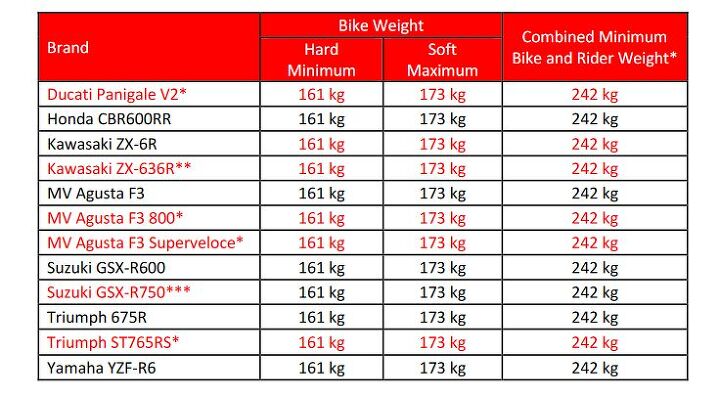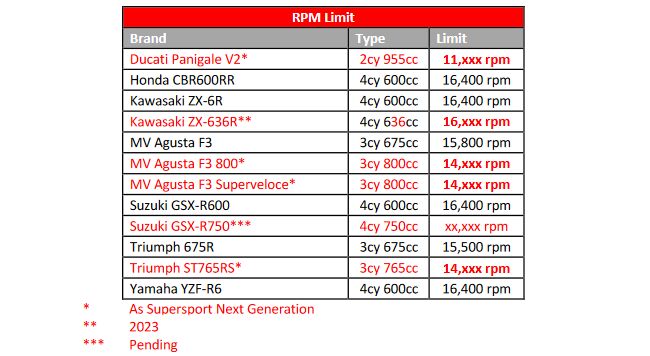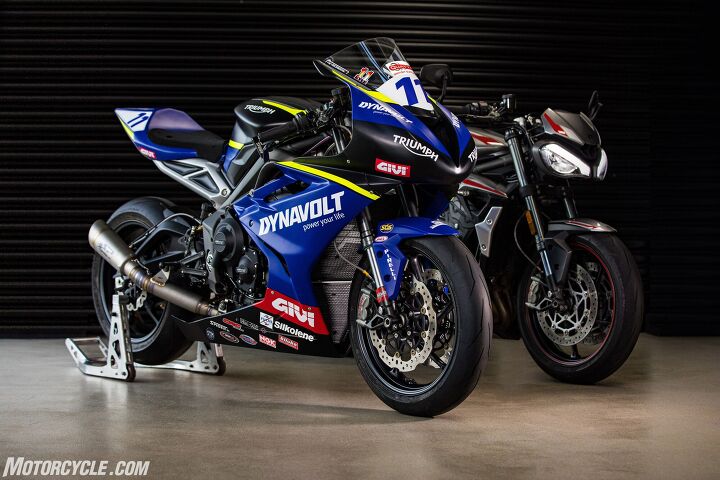Motorsports Racing News & Blog Articles
FIM Releases Provisional Supersport Next Generation Regulations
The International Motorcycling Federation (FIM) has released provisional regulations for the revamped World Supersport championship, including new motorcycles being added to the series as “Supersport Next Generation” models.
The WorldSSP shake-up comes as the traditional 600cc Inline-Fours that have dominated the class have lost their market relevance, because of strengthened emissions standards, changing customer demand, and other factors. The Supersport Next Generation models debuting in the 2022 season include the Ducati Panigale V2, MV Agusta F3 800, MV Agusta F3 Superveloce, and Triumph Street Triple RS. The Suzuki GSX-R750 is also included, but with asterisks indicating it is pending approval. The 636cc version of the Kawasaki ZX-6R (listed in the regulations as the ZX-636R, suggesting a potential name change for the production model) will join the series in 2023.
For the 2022 season, the Supersport Next Generation models will race alongside existing WorldSSP models including the Honda CBR600RR, Kawasaki ZX-6R, MV Agusta F3 (675cc) Suzuki GSX-R600, Triumph Daytona 675R, and Yamaha YZF-R6. From 2023 on, only Supersport Next Generation models will be allowed.
The Street Triple stands out from this group, as the production model is a naked bike and not a faired sportbike. The new rules account for this, adding a new regulation stating that production models not fitted with a fairing may be equipped with one produced by the manufacturer upon agreement with the FIM SBK Technical Director and series organizer Dorna WorldSBK Organization. Triumph has already been racing a Street Triple equipped with a Daytona fairing in the 2021 British Superbike series, so we have a good idea how this will work in WorldSSP.
The GSX-R750 also stands out because of its pending status. For one, the model has been discontinued in Europe and Japan, though it is still available in the U.S., which is still enough to fulfill the rule book’s road homologation market requirement. More pressing though, is the new rules require all Supersport Next Generation models to be equipped with a ride-by-wire throttle, either as OEM equipment or as part of a compulsory kit. The production GSX-R750 does not have a ride-by-wire throttle, so its final approval may be awaiting an upgrade kit.
Of the manufacturers that competed under the old regulations, Yamaha and Honda do not have a Supersport Next Generation model. Honda has a new CBR600RR in select markets such as Japan and Australia, but it is not considered part of the Next Generation. Yamaha has discontinued the R6, but there are indications a replacement may be in the works.

For now, every WorldSSP bike is required to meet the same hard minimum weight (355 pounds), soft maximum weight (381 pounds) and combined minimum bike and rider weight (534 pounds). These weight limits may be tweaked as they go, to maintain competitive balance.
The provisional regulations also outline how Supersport Next Generation models fit into existing rules for various components such as suspension, brakes, and exhausts. One interesting change is the new models have smaller fairing tolerances of ±8 mm compared to the production models, and +5 mm in overall with of the frontal area. The rules for existing WorldSSP models allows for tolerances of ±10 mm and +10 mm, respectively.
The 2022 WorldSSP series begins April 8-10 at Aragon.
Become a Motorcycle.com insider. Get the latest motorcycle news first by subscribing to our newsletter here.
The post FIM Releases Provisional Supersport Next Generation Regulations appeared first on Motorcycle.com.
Copyright
© Motorcycle.com



